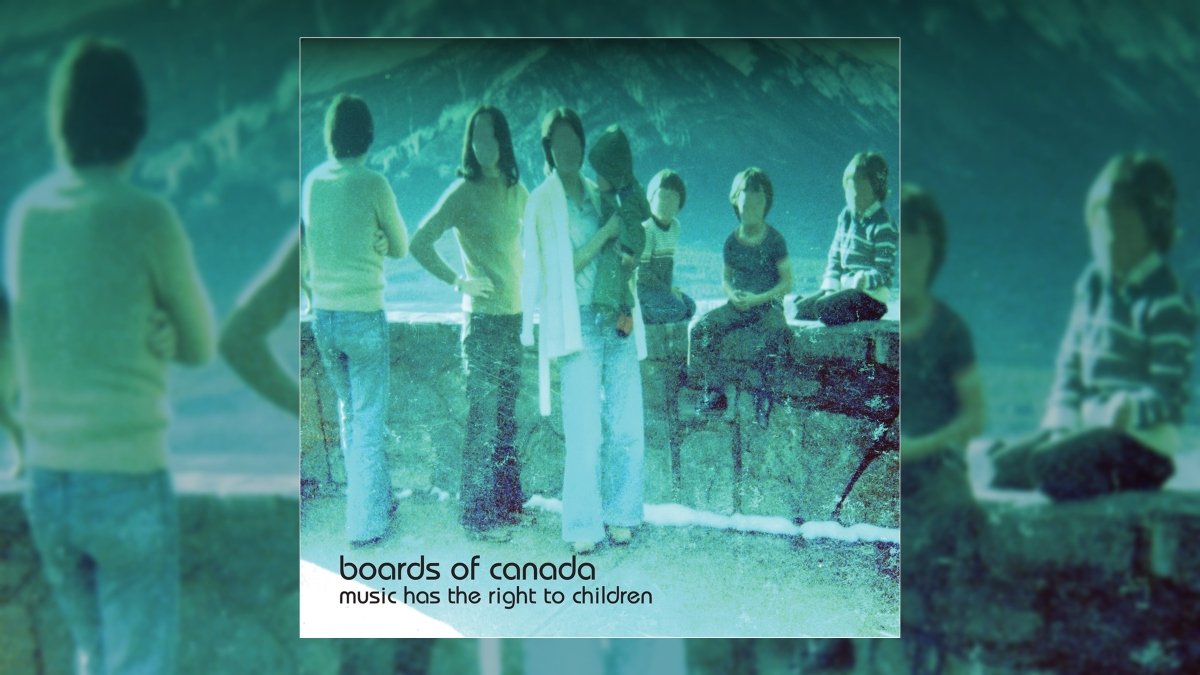Happy 25th Anniversary to Boards of Canada’s debut album Music Has the Right to Children, originally released April 20, 1998.
There is a lot of pseudo-psych talk around “healing one’s inner child.” High level, it sounds like playing with toys or watching shows that bring you back to that place but in a safer, more positive light. Re-parenting yourself from a gentler, wiser perspective. This is what Boards of Canada’s debut album Music Has the Right to Children is like. It’s a varied and complex composition, but delightful and soothing. It captures a child’s wonder and enjoyment of music, with an adult intelligence and vocabulary.
Perhaps having a shared recollection of youth helped to shape this sound—Boards of Canada is the moniker of two Scottish brothers, Michael Sandison and Marcus Eoin, who began creating music together early in their own childhood. After releasing two EPs, the brothers gained the attention of Autechre’s Sean Booth, a fellow Scot and legend of the electronic music scene. Recorded in a bunker-like studio in the Pentland Hills, south of Edinburgh, the landmark electronic album was released in the UK on Warp Records, as well as Manchester’s Skam Records, and in the US by Matador Records (a ‘90s indie hat trick).
Throughout Music Has the Right to Children, ambient, natural sound is blended with nostalgic artifice like vintage synthesizers and samples from Sesame Street. During a time when several of Boards of Canada’s IDM contemporaries were producing something that felt cold and inorganic, they were able to make robotic music sound alive. To achieve this vibrant quality, the duo rely heavily on nostalgia—using old samples reworked to achieve an underwater feel, vocals played in reverse, and other analog-era tricks. For example, “Aquarius” features children’s giggles amongst an isolated, robotic woman’s voice counting, and a sample from the 70’s musical Hair. “Happy Cycling” has the same kind of found footage style-sampling and familiar hi-hat groove.
Named after the National Film Board of Canada, Boards of Canada is consistently rooted by their bucolic style, a kind of romanticism rarely seen in the electronic genre. This theme comes through loudly in Music Has the Right to Children—it feels like the musical equivalent of lying in a field of flowers on a warm spring day. “ROYGBIV,” one of the most iconic tracks of the album, has a fuzzy synth bassline that blooms into breakbeats and rich piano tones. “Smokes Quantity” has a swarming buzz, cut with a kick-drum that feels straight off a Wu-Tang track. The effect is ethereal, a gauzy texture of half-remembered dreams.
Listen to the Album:
The album cover, a washed-out vacation photo of an anonymous family from decades earlier, speaks to the timeless quality of the music. In the late ‘90s, most electronic musicians were focused on the advancement of their craft and making something entirely new. While Boards of Canada are often associated with other Warp acts and IDM icons like Autechre, Aphex Twin or Squarepusher, in retrospect they seem more closely aligned with someone like J Dilla, in regards to their sampling methods. Music Has the Right to Children is an artifact of the 20th century, somehow telling a collective history for a broad audience.
Reacting to the Jaron Lanier notion that keeping in step with new technologies stifles creativity, in a 2013 interview with The Guardian, Sandison said, “I absolutely agree with that. Modern technology often gives an illusion of empowerment while in reality it's increasingly all about removal of liberty and homogenizing the user base.” This idea is central to Music Has the Right to Children—they have a clear sense of history, alongside a modern point of view, making them able to cherry-pick the best techniques for communicating their art.
And 25 years later, it’s clear that this sentimental posture has created a special timeless quality in Music Has the Right to Children, along with the rest of the Boards of Canada catalog.
Listen:

